Living walls
At Riverlea garden in Taranaki, green walls, dividing one garden room from the next and smartly defining garden edges, are key to the garden’s year-round structure. Over the years, owners Ann and Vince, have experimented with a wide range of different hedge plants and have come up with some winners.
Camellias
Besides their beautiful flowers, some camellias are worth planting for their foliage alone. As trimmed hedges the small leaf, small flower varieties are best. As the backdrop to the perennial border, Ann chose Camellia transnokoensis for its red new growth and dainty flowers that remain after trimming. She also recommends Camellia ‘Spring Festival’ for its strong upright growth, good for a slim hedge.
Camellia sasanqua varieties are among the best choices for hedges. Of these Ann and Vince have planted the popular white flowered ‘Setsugekka’ and two hedges of compact, red flowered ‘Yuletide’, one at one metre tall and one at two metres.
Behind the maple walk is a tea leaf hedge, Camellia sinensis with shiny green bright green leaves. The tea plant is a small tree naturally but is commonly grown as around a mere tall and wide. Small white single camellia flowers occur on untrimmed plants. Frequent pruning promotes the fresh leaf growth for tea plucking.
Corokias
New Zealand native Corokias make excellent hedges. Tiny-leafed cultivars are especially good for formal trimming. Vince and Ann have planted ‘Frosted Chocolate’ with its silver grey and chocolate tones and ‘Genty’s Green’ , which is popular for its olive like leaves. Corokias are best trimmed little and often. Vince trims his at leat twice a year, ideally in winter and again in summer.
European beech
A stunning beech hedge (Fagus sylvatica) encloses a large formal lawn adjacent to Vince and Anns living areas and veranda, with trimmed archways leading out to other parts of the garden. A tall deciduous tree in its natural form, beech is a top choice for a tall dense hedge. Fresh green leaves have a silky sheen in spring. In autumn they turn gold then bronze, falling just prior to the emergence of new spring growth.
Heavenly bamboo
Echoing the colours of Ann’s hot flower border a Nandina 'Gulfstream' hedge flaunts it’s bright coppery red foliage. Tough and drought tolerant nandinas grow differently to a conventional hedge; rather than regular shearing, they’re cut back close to the ground once a year to promote fresh new leaves. Vince takes off a third of the growth in summer.
Horopito
A low sweeping curve of Pseudowintera ‘Burgundy Delight’ makes a vibrant accent between green lawn and shrubs. This low growing shrub has light gold-green leaves with red overtones that deepen to rich red as the weather cools in winter. It tolerates frost and periods of dry.
Tororaro
With tiny heart-shaped leaves on lacy brown-red twigs, Meuhlenbeckia astonii is a beautiful lacy textured native shrub that’s superb either as a billowy informal hedge or trimmed to more formal shapes. This one is excellent for windy and coastal sites.
Poor Knights Mapou
Dark green Myrsine aquilonia makes an attractive NZ native alternative to English box with small heart shaped leaves. Clipped as a waist height hedge, it is thriving in Ann and Vince’s garden.
Totara
Podocarpus totara ‘Matapouri Blue’ is a blue-green variety of totara which makes a stunning hedge with thick dense yew-like growth. Vince trims his at a metre but it is also a great choice for a taller hedge of 2 or 3 m.

29-Feb-2024
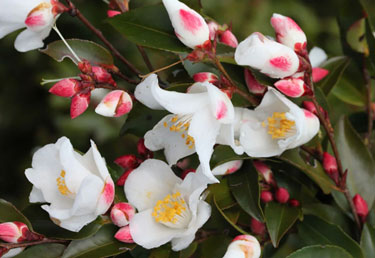
Camellia transnokoensis
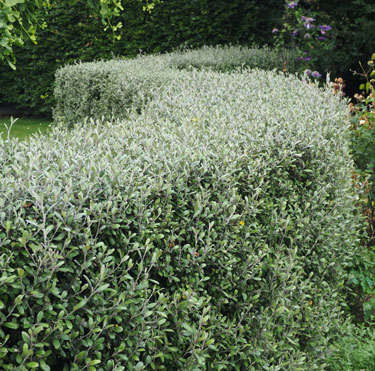
Corokia 'Frosted Chocolate'
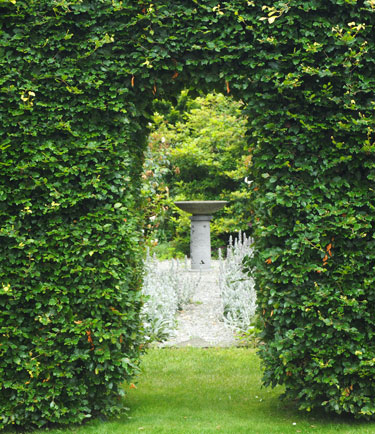
European beech

Pseudowintera 'Burgundy Delight'
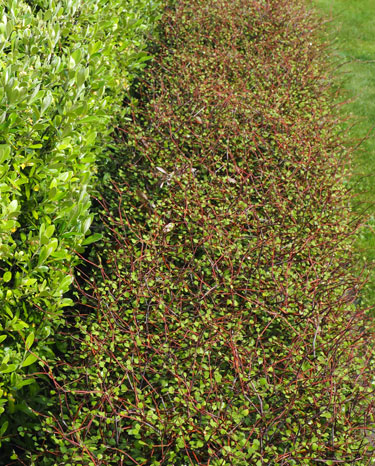
Meuhlenbeckia astonii
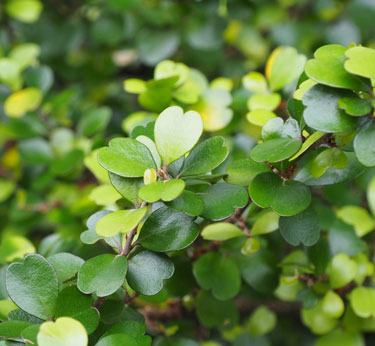
Myrsine aquilonia
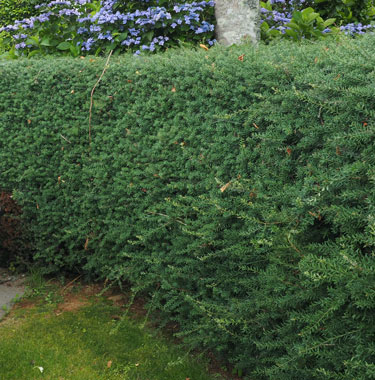
Podocarpus totara 'Matapouri Blue'

